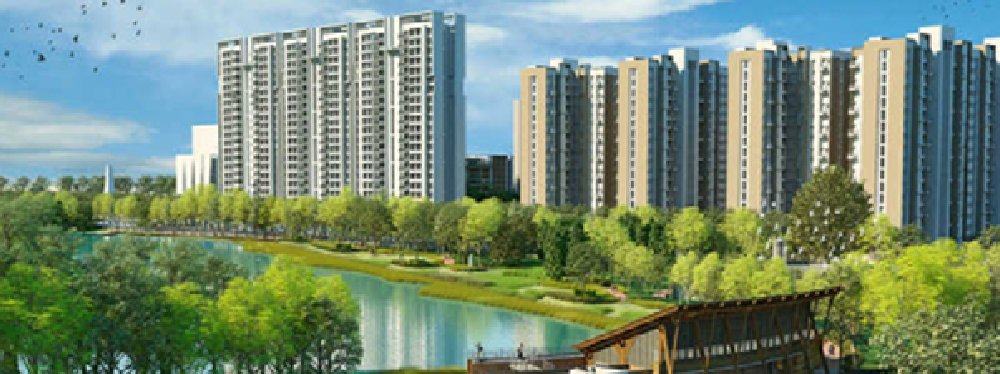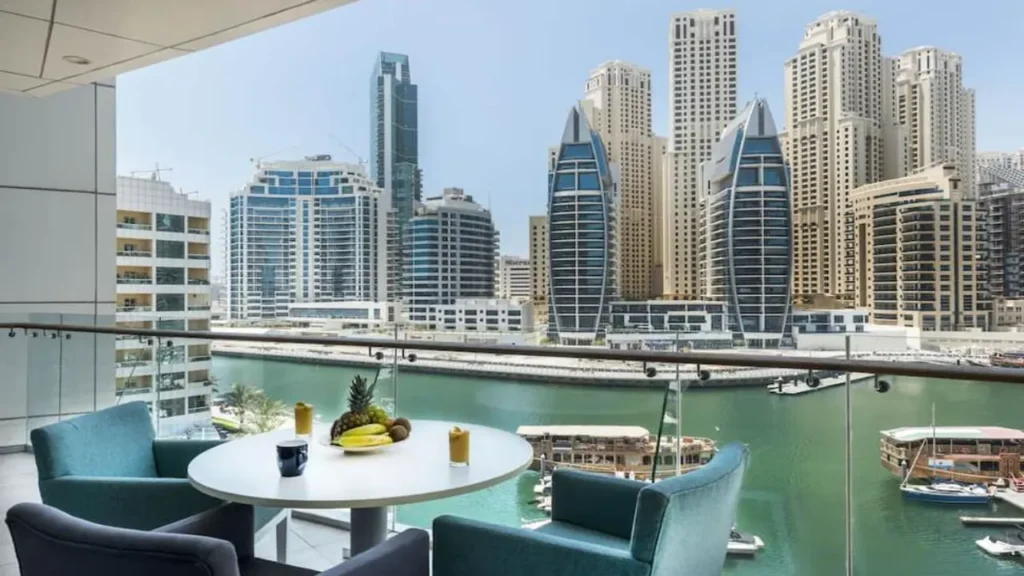
Waterfront apartments have long been associated with luxury, exclusivity, and breathtaking views. But beyond their aesthetic charm lies a strong investment potential—especially for long-term rentals. As cities expand and lifestyles evolve, tenants are increasingly drawn to homes that combine convenience, tranquility, and prestige. This growing demand has positioned waterfront apartments as one of the most stable and profitable segments in the rental market.
Below, we’ll explore why these properties continue to attract long-term tenants, what drives their rental potential, and how investors can make the most of this flourishing niche.
There’s something timeless about waking up to the sight of sparkling waters. Waterfront properties—whether located along beaches, lakes, rivers, or marinas—offer a living experience that blends relaxation with sophistication.
For many renters, it’s not just about the view; it’s about the lifestyle. Waterfront apartments often provide easy access to leisure activities like kayaking, jogging trails, beach walks, and fine dining along the shore. The calmness of water has a psychological impact too, promoting a sense of peace and well-being that urban dwellers crave.
As mental wellness becomes a top priority in post-pandemic living, waterfront homes have emerged as symbols of balance—offering both comfort and escape from city chaos.
Waterfront apartments aren’t just beautiful—they’re practical investments with steady rental demand. Several key factors contribute to their consistent appeal among long-term tenants.
1. Limited Supply and High Exclusivity
Waterfront land is finite. Unlike other residential zones that can expand inland, the number of properties along coastlines and lakeshores is restricted by geography. This scarcity naturally drives demand and sustains higher rental prices.
2. Stable Tenant Profile
Long-term renters of waterfront apartments typically belong to upper-middle or high-income brackets. These tenants are professionals, business executives, or expats seeking stability and comfort. This results in lower turnover rates and more reliable rental income.
3. Lifestyle and Accessibility
Modern waterfront developments are often designed as mixed-use communities featuring retail spaces, gyms, cafes, and marinas. The convenience of having everything nearby adds immense value for long-term residents who prefer an all-inclusive lifestyle.
4. Strong Tourism and Hospitality Influence
In cities like Dubai, Miami, and Singapore, waterfront districts are global tourism magnets. Even though short-term rentals are popular, many long-term tenants—especially expats—prefer leasing these properties for extended stays due to proximity to business hubs and recreational areas.

Investing in a waterfront apartment can yield impressive returns if managed strategically. While initial purchase costs may be higher, the long-term financial benefits often outweigh the expenses.
Premium Rental Yields
Due to their desirable location and limited availability, waterfront apartments command premium rental rates—sometimes 20–40% higher than inland properties. Long-term tenants are willing to pay for the exclusivity and amenities that come with such homes.
Capital Appreciation Over Time
Waterfront properties tend to appreciate faster than other residential types, especially in cities undergoing coastal development. The combination of scenic appeal, luxury branding, and infrastructural upgrades contributes to long-term value growth.
Consistent Occupancy Rates
In popular coastal or marina zones, occupancy rates for waterfront rentals often exceed 90% year-round. This ensures a steady income stream with minimal vacancy gaps, a critical factor for investors seeking financial stability.
Despite their advantages, waterfront investments require careful planning. Investors should be aware of potential risks to safeguard their returns.
Maintenance and Upkeep
Properties located near the sea or water bodies face exposure to humidity, salt corrosion, and weather wear. Regular maintenance, waterproofing, and quality materials are essential to preserve property value.
Insurance and Safety Costs
Insurance premiums for waterfront apartments may be higher due to potential flooding or storm damage. Investors should factor these costs into their financial projections.
Government Regulations and Zoning Laws
In some coastal cities, strict zoning laws limit new developments to protect natural habitats or maintain public access to beaches. Understanding these rules ensures smoother investment planning.
Market Cycles and Tourism Dependency
Areas heavily reliant on tourism might experience fluctuations in rental demand during economic slowdowns. However, this can be mitigated by targeting long-term corporate tenants or residents rather than short-term vacationers.
The success of a waterfront rental depends largely on its location. Some regions are naturally more attractive due to economic activity, infrastructure, and quality of life.
1. Dubai Marina and Palm Jumeirah (UAE)
Dubai’s waterfront communities are globally recognized for their luxury living standards. With an influx of expats and corporate professionals, long-term rentals here achieve strong yields—often between 6–8%.
2. Miami and Fort Lauderdale (USA)
The vibrant mix of leisure and commerce makes Florida’s coastal cities prime for long-term tenants. Ocean-view condos near business districts appeal to both retirees and young professionals.
3. Singapore’s Sentosa Cove
A symbol of modern elegance, Sentosa’s waterfront properties offer exclusivity and long-term investment security, catering to affluent expatriates and business owners.
4. Sydney’s Darling Harbour and Barangaroo
These areas blend scenic waterfront living with access to central business zones, ensuring consistent rental occupancy from professionals and families alike.
5. Coastal Europe (Spain, Portugal, Greece)
European waterfront towns are gaining traction among digital nomads and retirees seeking extended stays with scenic surroundings and moderate living costs.
To attract long-term tenants, landlords must align their offerings with modern renter expectations.
1. Space and Layout
Renters prefer open-plan layouts that maximize natural light and water views. Balconies, terraces, and floor-to-ceiling windows add immense value.
2. Smart Home Features
Technological convenience is a major factor today. Tenants appreciate integrated home automation, security systems, and energy-efficient designs.
3. Amenities and Community Experience
Access to private beaches, swimming pools, fitness centers, and community events enhances the overall living experience, encouraging tenants to stay longer.
4. Sustainability and Eco-Friendly Design
Green buildings are increasingly in demand. Developers using solar panels, water-saving systems, and sustainable materials attract environmentally conscious renters.

Many investors face the choice between long-term and short-term leasing strategies. While short-term rentals (like Airbnb) can generate quick income, they often involve higher management costs and occupancy fluctuations.
In contrast, long-term rentals provide stability and predictability. Tenants who stay for a year or more ensure continuous cash flow, reduced maintenance interruptions, and fewer administrative hassles. For waterfront apartments, the steady demand from corporate clients, expats, and retirees makes long-term leasing the safer bet for sustained returns.
To fully capitalize on the value of waterfront apartments, investors can follow a few proven strategies:
With the rise of hybrid work and the desire for lifestyle-centric living, the future of waterfront rentals looks promising. Many professionals now seek homes that combine work-friendly spaces with leisure environments—making waterfront apartments an ideal choice.
Urban planners are also integrating more mixed-use developments along coastlines, blending business districts with residential and entertainment hubs. This evolution enhances long-term rental potential by making waterfront living accessible to a broader demographic.
Furthermore, sustainability initiatives and advanced coastal engineering are helping mitigate environmental risks, ensuring that waterfront properties remain viable and valuable for decades.
Waterfront apartments represent more than luxury—they embody long-term financial security, lifestyle appeal, and future-ready value. With limited supply, stable demand, and consistently high yields, they stand as some of the most reliable investments in modern real estate.
For investors seeking to diversify their portfolio with assets that blend beauty and profitability, waterfront rentals offer a winning formula. The key lies in strategic location selection, proper maintenance, and understanding evolving tenant expectations.
In the ever-changing landscape of real estate, few assets hold the enduring charm and dependable returns of a well-placed waterfront apartment—making them not just homes, but timeless investments in both life and lifestyle.
Do Follow Estate Magazine on Instagram
How to List Your Property in Dubai for Maximum Exposure & Success
